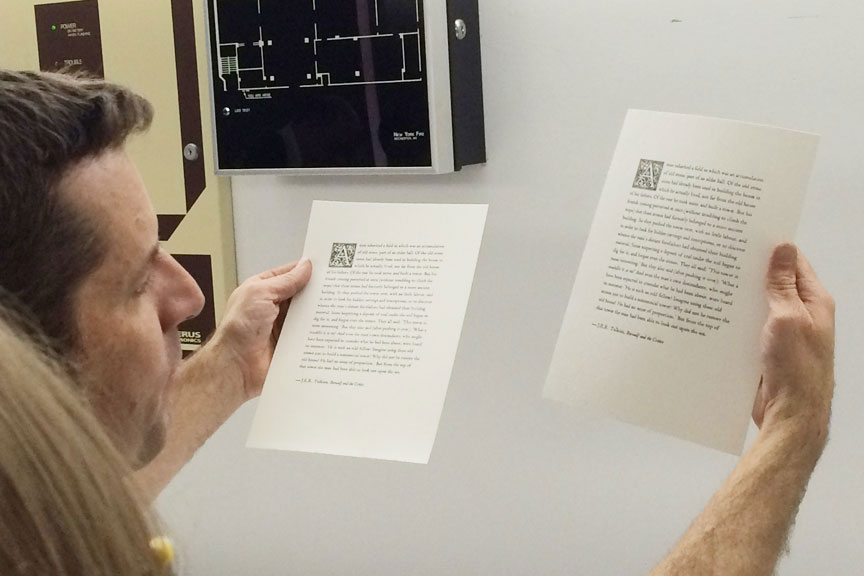Albion Finesse
Chad Johnson: “Quality Assurances for Printing on the Hand Press”
9AM-Noon thursday, october 22
Dating to the 1820s, the Albion iron hand press we practiced on was once used by American wood engraver John DePol. Presenting from the perspective of a journeyman printer, Chad Johnson explained that “the right impression is what the client wants.” Noting that Richard-Gabriel Rummonds’ Printing on the Iron Handpress is the reference, Chad described the dressing of the frisket using Linson paper and suggested that from a production standpoint it would be ideal to have multiple frisket frames.
Chad’s checklist highlights four main points: inking, packing, dampening, and balancing.
Inking: Oil-based ink (with little or no added dryer) is Chad’s preference to ensure crisp type. Listen (for hiss) and feel for the resistance (pull) of the ink when charging the roller. Start light and work dark gradually (aiming for 4-6 layers of ink), flipping the roller periodically on the ink plate, as well as the form, to keep ink distributed evenly. “If you need drying racks, you’re probably over inking.”

When charging the roller use your sense of hearing and touch to get the ink just right. (Jill Cypher)
Packing: Avoid overpacking by building gradually. Combine soft (newsprint, bond) and hard packing (Mylar, tympan, board) vs. using all soft packing, which leads to excess pressure and image distortion. Avoid packing under the form—set type in a chase on an imposing stone and bring it to the press bed for lock up.
Dampening: Chad prefers to use a fine mister to dampen, plus the addition of blotter paper at regular intervals for its hydroscopic qualities. Aim for pH neutral water (not distilled). For heavy stock he suggested dampening every other or third sheet. For light stock, dampen every fourth or fifth sheet. Aim for barely damp, not wet.
Balancing: When the platen descends, it is balanced, or leveled, to hit the form evenly through the use of platen bearers placed in the corners of the bed and packed out as needed. Correct balancing of the platen creates an even impression and can prevent wear to the form. Workshop participants got to ink and pull two dry sheets and then two dampened sheets for comparison.
The takeaway: experiment. Use all your senses and take your time. Cursing helps. Chad reminded us that printing is not magic. “It’s industry, technology, math and science. But it’s not always an exact science.”



